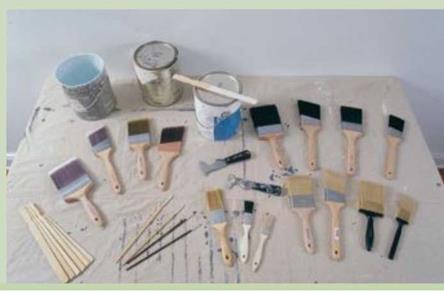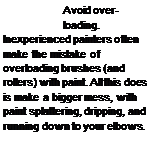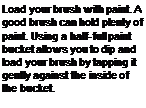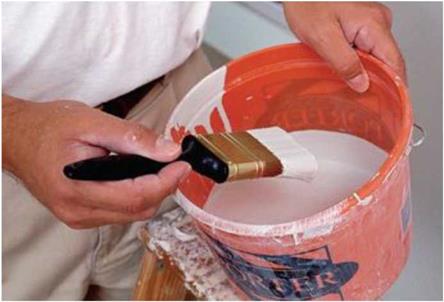CHOOSING AND CARING FOR BRUSHES

My hand likes the fit of a long-handled brush. But bristles, not handles, are what make a good brush. Brushes with natural bristles, usually hog’s hair, work best with oil-based products. Synthetic-bristle brushes work best with water – based paints. Soft nylon bristles are a good choice for finish work, whereas stiffer poly bristles are better for painting rough or textured surfaces, such as siding. A combination of nylon and poly bristles usually makes a good all-purpose brush. For painting large surfaces, a 3-in. or 4-in. brush with square-cut bristles is a good choice. A 1-in. or 2-in. brush with bristles cut at an angle gives you more control for cutting in trim.
A quality brush can last for years if you take good care of it. That means cleaning it thoroughly each time you use it. First, remove most of the paint from a brush by painting on some cardboard or newspaper. If you’re using oil-based paints, then you must wash the brush in paint thinner. Latex and acrylic paints can be washed in lukewarm soapy water. Once the brush is clean, you can either spin it dry with a
brush spinner (available at most home centers and hardware stores) or just let it dry naturally. A wire brush and a brush comb are good to have on hand for removing hardened paint and straightening the bristles. Finally, once the brush is dry, store it in its wrapper until you need it again.
![]()
![CHOOSING AND CARING FOR BRUSHES Подпись: Cut in with a paint brush. A roller can't reach corners and edges. A 3-in.- to 4-in.-wide brush is ideal for painting these areas. [Photo courtesy HFHI]](/img/1312/image743.gif)



that have dried on the floor. Drywall mud left on the floor can work its way up through a carpet. Then vacuum up all the dust. Cover the tub or shower with a protective sheet of inexpensive 1-mil plastic, often called painter’s poly, affixed with masking tape.
Apply the prime and finish coats
My advice for buying paint and brushes is the same as for buying any other tools and materials: Talk to contractors and knowledgeable folks working behind the counter where you buy your supplies. Then buy the best you can afford. A knowledgeable paint supplier will help you choose primer and finish paints that are compatible; you’ll also get advice on the best brushes and rollers to use with your paint. For some basic background information, see the sidebar on p. 231. A well-built house deserves a quality paint job. Spending more money on high-quality paint can actually save you money down the road, because good paint covers better and holds up well over time.
When using several gallons of a single color, mix them together in a 5-gal. bucket to ensure uniformity. Keep the pigment mixed by stirring well before painting and throughout the day.






Leave a reply